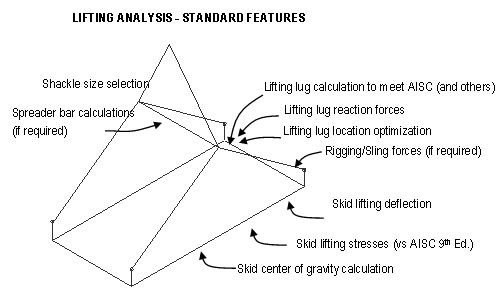Services
- Static Equipment & Structures (Piping Vibration & Fatigue)
- Acoustic Fatigue Assessment for Blowdown Systems
- Acoustic-Induced Vibration (AIV) Analysis
- Finite Element Analysis (FEA) and Computational Fluid Dynamics (CFD)
- Flow-Induced Turbulence (FIT) Analysis
- Flow-Induced Vibration (FIV) Analysis
- Multiphase and Slug Flow Analysis
- Pipe Stress Analysis
- Piping Vibration and Integrity Assessment
- Review & Design Support Services
- Small-Bore Connections (SBC) Assessment
- Structural Vibration and Dynamic Design Analysis
- Subsea Piping Vibration
- Thermal Striping
- Tube Failure Analysis
- Veridian AM
- Veridian VS
- Vibration Inspection Program
- Water Hammer Analysis
- Machinery Analysis
- Bottle Sizing Service
- Compressor Package Engineering
- Finite Element Analysis (FEA) and Computational Fluid Dynamics (CFD)
- Foundation Design and Dynamic Analysis
- Fuel Gas Compressor Piping Transient Analysis
- Lateral Vibration Analysis
- Pipe Stress Analysis
- Pulsation & Mechanical Analysis: Reciprocating Compressor
- Pulsation & Mechanical Analysis: Reciprocating Pump
- Pulsation & Mechanical Analysis: Screw Compressor
- Pump RCF Analysis
- Review & Design Support Services
- Shell Transverse Acoustical (STA) Analysis
- Skid Design and Analysis
- Surge Control Design for Centrifugal Compressor Systems
- Torsional Vibration Analysis (TVA)
- Field Engineering & Troubleshooting
- Finite Element Analysis (FEA) and Computational Fluid Dynamics (CFD)
- Human Vibration
- Motion Amplification Vibration Analysis
- Noise Troubleshooting
- Performance Assessment (Thermodynamic)
- PostPro – field data processing and analysis
- Structural Vibration Troubleshooting
- Thermal Striping
- Troubleshooting, Root Cause Analysis (RCA)
- Veridian iDAC
- Vibration Inspection Program
Skid Design and Analysis
Lifting, Environmental Loading; Static and Dynamic Design

For new skid designs a dynamic analysis is often required to resolve a vibration problem. In addition to the dynamic analysis, other design criteria must also be addressed.
Contents [ hide ]
- 1 Skid Design Challenges
- 2 Examples of Skid Resonance and Vibration
- 3 Skid Design Solutions
- 3.1 Lifting, Loading and Transportation Study – Scope and Features
- 3.2 Dynamic Skid Vibration and Stress Analysis – Scope and Features
- 4 Customer Benefits
- 5 Wood Advantages
- 6 Related Information
- 7 Related Services
- 8 Keywords
1 Skid Design Challenges
The majority of compressor and pump packages are now mounted on steel skids or baseplates. Designing a skid for a new machinery package can be challenging because of these factors:
- The skids must be designed to avoid resonance and vibration (from dynamic machinery and unbalanced forces and couples).
- The industry is looking for lower cost packages. This can cause suppliers to reduce the skid cost which often results in detrimental decrease in skid stiffness. But an inappropriately designed skid will create vibration and reliability problems. In some cases, skids are considered too flimsy for the required application.
- New designs must consider loading, lifting and transportation issues, as well as weight limitations. Pedestal height can also cause problems.
- Environmental loads such as wind, wave, and seismic activity must meet a variety of different codes and standards.
2 Examples of Skid Resonance and Vibration
These two animations are examples where the skid was resonant and created severe vibration problems. The animations are called operating deflection shape (or ODS) and are based on field vibration measurements. An ODS is helpful to understand the relative vibration and even the mode shapes. These examples illustrate why a dynamic skid analysis is often required. The picture on the right illustrates the modifications required to adequately support the engine (shown in yellow). This solution has resolved the vibration problems.
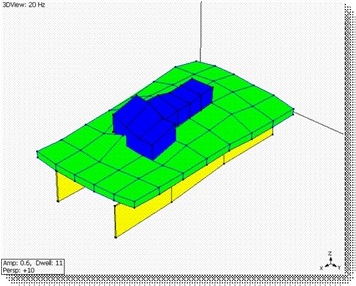 |
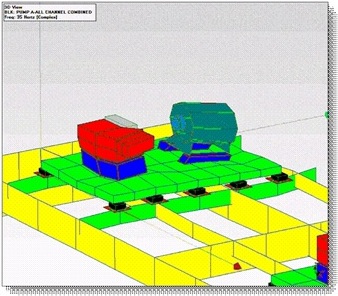 |
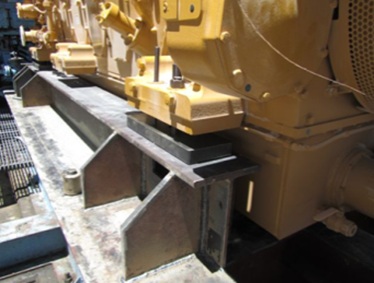 |
Video: Example of Vibration and Structural Dynamic Analysis
3 Skid Design Solutions
Two commonly required skid studies are performed to address the above challenges. These engineering requirements must be specified (by the owner or EPC) to ensure they are included in the project.
Specifications
- Lifting, Environmental, and Transportation Studies. These studies will ensure the skid can be lifted, transported to site, and withstand environmental loads such as those induced by the wind or an earthquake. Skid applications will need to meet industry codes and customer specifications for these loads.
- Dynamic Skid Analysis. The study is focused on rotating or reciprocating machines. It will assess the vibration and dynamic stress amplitudes in the skid structure and components mounted on the skid to identify if modifications are required.
For many packagers, Wood can also help reduce the cost of the skid (Skid Optimization Study). Contact us for further information on ways to reduce unnecessary costs (labor and materials).
Note that the final skid design is affected by the compressor foundation design (i.e., the dynamic stiffness will vary depending if a concrete, gravel, steel structure or pile foundation is supporting the skid).
3.1 Lifting, Loading and Transportation Study – Scope and Features
|
|
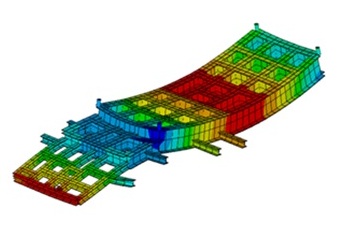 |
||
|
Lifting Analysis – one aspect of lifting, loading and transportation analysis |
|||
Scope
- Applies to any skid application (supporting process piping and vessels, compressors, pumps, engines, generators, etc.)
- Evaluate the skid design to ensure the skid member stresses are below appropriate code specifications such as the AISC requirements. Other lifting standards may also apply for offshore platform or FPSO applications (such as API RP-2A-W5D).
- Evaluate skid design based upon lifting loads, transportation and hold-down requirements, and environmental loads such as wind, seismic activity, motion and/or inclination of skid in FPSO or offshore applications.
Features in Wood's study
- Skid deflections due to lifting are compared to industry or customer specifications.
- Skid lifting lugs are appropriately sized.
- The center of gravity is calculated.
- Spreader bar and shackle design are recommended.
- As an option, Wood can perform anchor bolt loading and a Finite Element Analysis (FEA)to evaluate localized skid flexibility, gusset and equipment mounting design.
- Report includes proposed modifications to the skid design and a summary of the applied loading and calculated results.
3.2 Dynamic Skid Vibration and Stress Analysis – Scope and Features
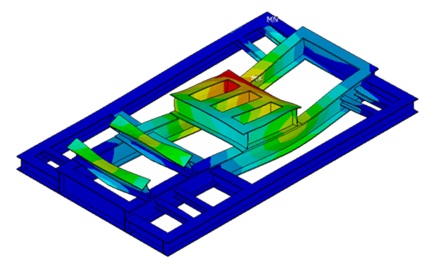 |
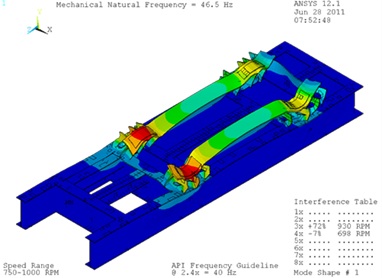 |
|
|
Examples of FEA models used in the dynamic skid analysis to avoid resonance and vibration problems. |
||
Scope
- Define magnitude and frequency of dynamic loading on the skid. (Dynamic loads will vary depending upon the application.)
- For reciprocating machines, the dynamic loads include unbalanced forces and moments, cross-head guide forces, gas rod load forces, pulsation induced forces in piping and vessel, and unbalanced forces and moments in the driver.
- Calculate skid vibration and stress and compare to industry or customer guidelines.
- Consider boundary conditions from the foundation (pile, gravel pad, concrete block or steel structure).
Features in Wood's study
- All compressor operating forces are applied vectorially to the model as dynamic loads.
- Vibrations and stresses are calculated for each load step and operating case.
- Engine unbalanced forces and moments are added to the operating load. Compressor gas forces and cross-head guide forces are calculated by Wood and applied to the FE model as a dynamic load.
- The appropriate damping ratio is applied based on Wood’s field experience.
- Design modifications are provided where vibration or stress exceeds guideline.
- If required, Wood can calculate stresses on the skid welds and compare to allowable limits.
- Report includes recommendations for the skid design and a summary of the applied loads and results (calculated mode shapes, MNFs, and vibration amplitudes).
4 Customer Benefits
- Skid design will comply with international standards (ABS, API, AISC) and customer specifications.
- Ensure safe lifting, transportation, and operation.
- Optimize skid costs by reducing unnecessary equipment and modifications.
- Ensure sufficient stiffness (at key locations) to avoid vibration problems for components mounted on the skid.
5 Wood Advantages
- Cost effective and reliable design, based on Wood’s experience in skid and structural dynamics
- Accurate FE models
- Fast turnaround
- Includes full system (machine dynamics and supporting foundation)
6 Related Information
- Specification for Reciprocating Compressors (pdf)
- Optimized Skid Design for Compressor Packages (GMRC 2013, pdf)
- Training module 1: vibration equation, resonance (Video)
- Structural Vibration and Ways to Avoid It (pdf)
- GMRC Project: Equipment Mounting - Stiffness Testing of Different Chocks and Support Designs (2014)
7 Related Services
- Reciprocating compressors – pulsation and mechanical analysis
- Reciprocating pumps – pulsation and mechanical analysis
- Foundation Design and Dynamic Analysis
- Structural Vibration and Dynamic Design
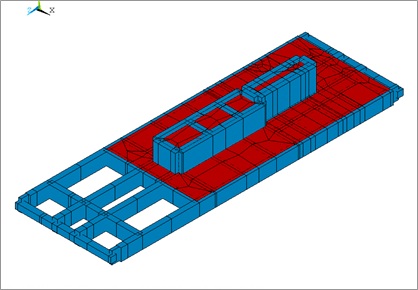 |
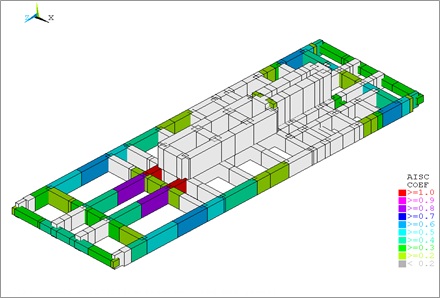 |
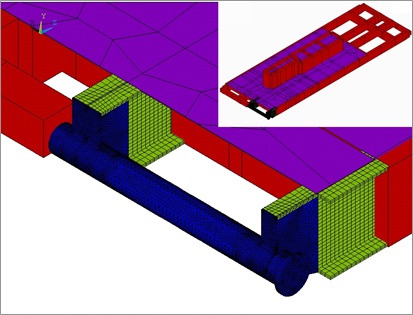 |
||
|
Skid model used for lifting analysis |
Skid requires modification to meet AISC Code (red areas exceed guideline) |
Detailed drawbar model to evaluate a new skid design |
||
8 Keywords
- Seismic
- Transportation
- Wind
- Wave
- Environmental loads
- Dynamic skid analysis
- Machinery skid analysis
More Info
Webinar: Vibration problem solving – back to basics • Multi-channel vibration measurements • Five simple methods to check reciprocating compressor performance • Webinar: Feeling the pulse • Webinar: Pump it up, damp it down • Pump Vibration Examples (Video) • Pulsations in Suction Piping (Reciprocating Pump) (Video) • Design Requirements for Reciprocating Compressors • Evaluating Compressor Operating Risks • Tips for Managing a Successful Vibration Project •
Free webinar
Learn how to select and design vibration control solutions that work – using real-world data and case studies. Register now

